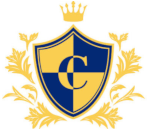In the OECD's assessment of international student performance in 2015, Finland's 15-year-olds were in top ten in mathematics, literacy and science, while the quality of tertiary education in the country is ranked one of the best in the world for quality and enrolment by the World Economic Forum.
All children are subject to compulsory education between the ages of 7 and 16 and usually attend the state school nearest to their home.
The vast majority of 16-year-olds completing their basic education then opt to attend an upper secondary school or a vocational school. Education at this level usually lasts for 3 years and paves the way for students to enter higher education – a route that is becoming increasingly popular in Finland.
The main objectives of Finland’s education system
Education is considered to be one of the fundamental rights of all citizens. Finland’s education system aims to offer all citizens equal rights towards education; regardless of age, sex, nationality, financial situation or mother tongue. The public authorities in Finland will guarantee children with learning difficulties or other special needs the same opportunities as all other children.
Private vs Public Schooling
Finnish legislation makes the establishment of private schools an unattractive prospect as their founding requires a decision from the Council of State.
It is strictly prohibited to charge fees at private schools, and students must be selected using the same criteria as the corresponding municipal schools. Additionally, they must give pupils all of the same entitlements that they would receive at a state school.
Therefore private schools are unusual in Finland, and the ones that do exist are either faith-based or Steiner schools. However there are also a few remaining private upper secondary establishments, but these are essentially only in name as remnants of the pre-1970s educational system.


